
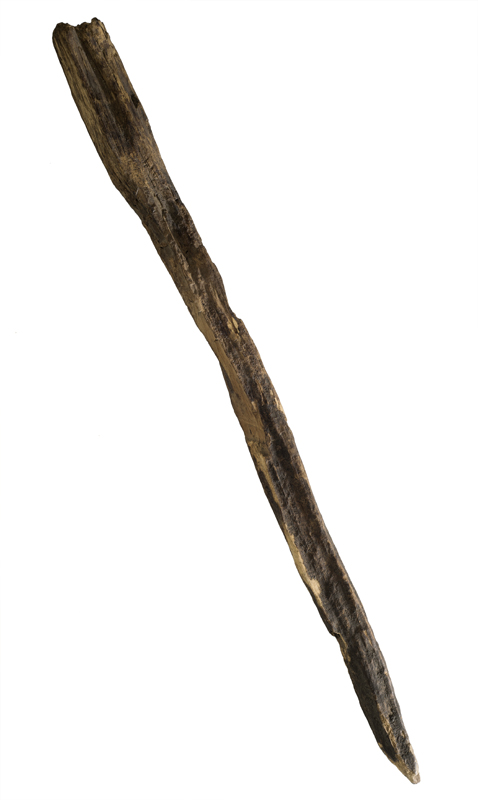
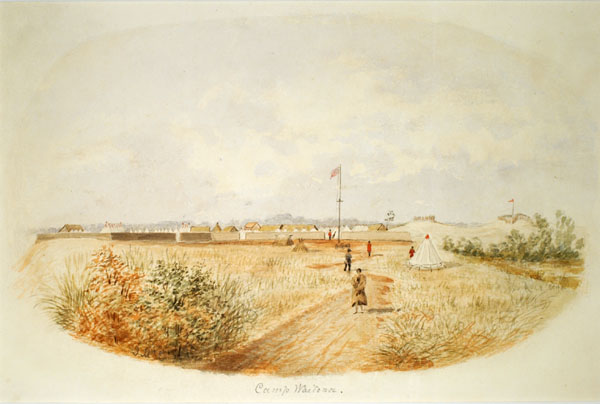
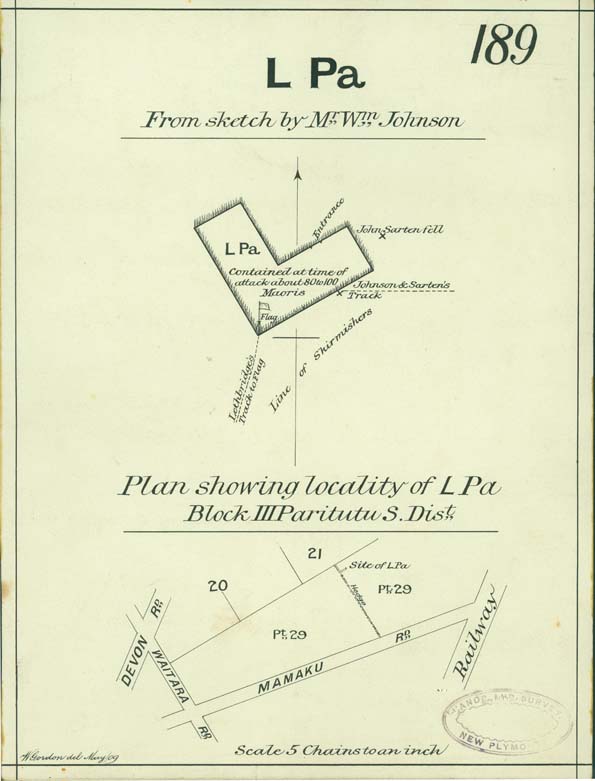
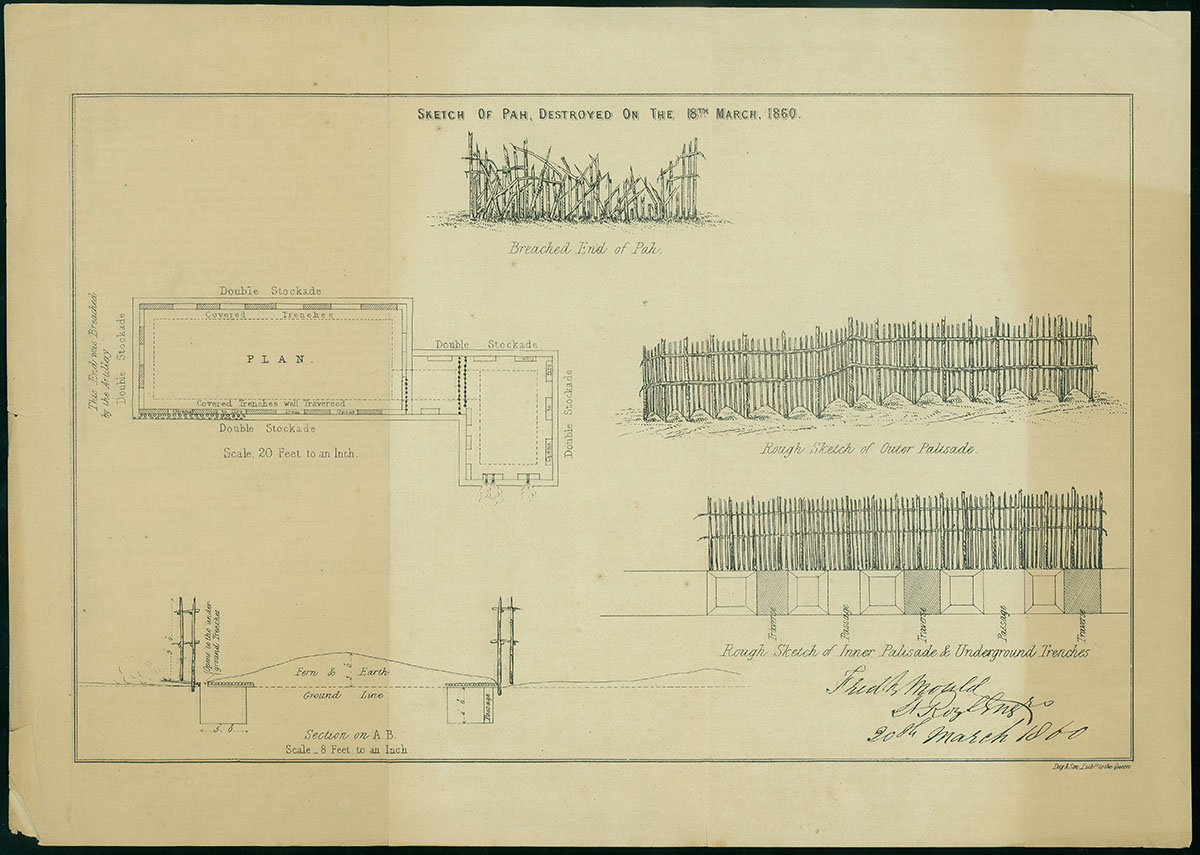
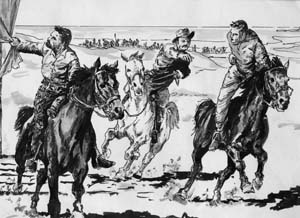
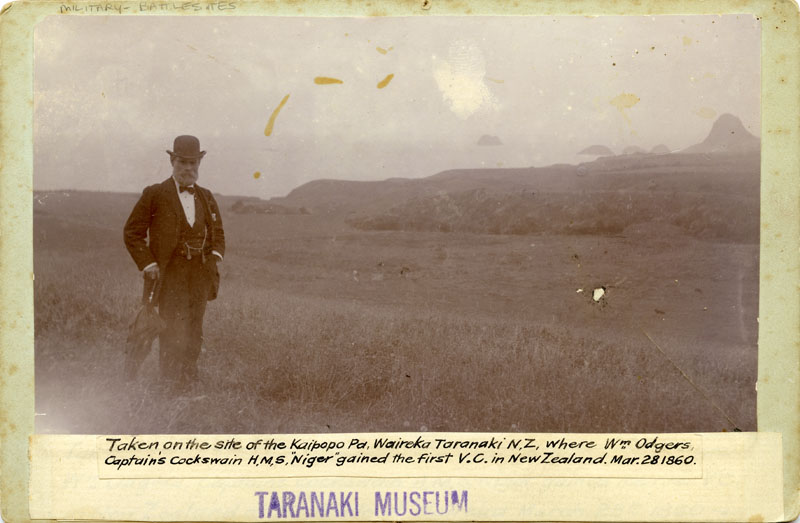
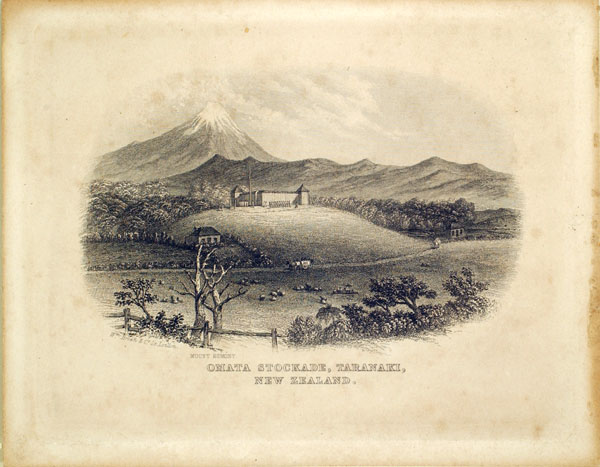
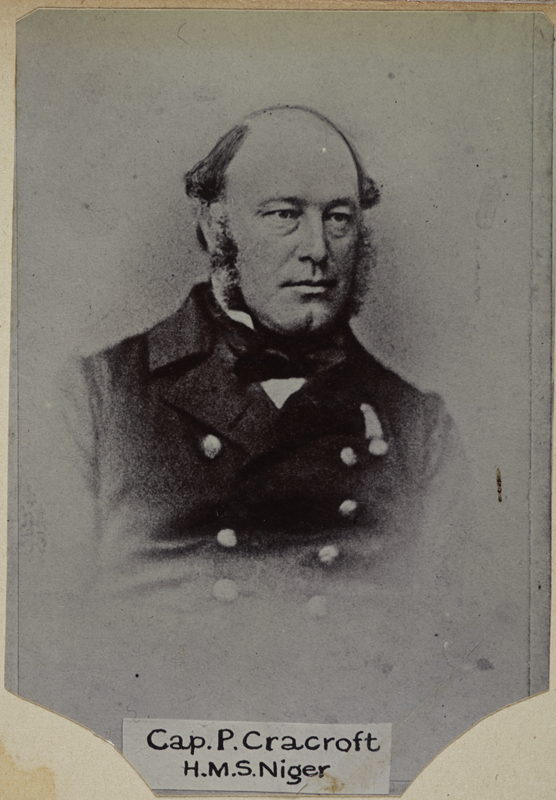
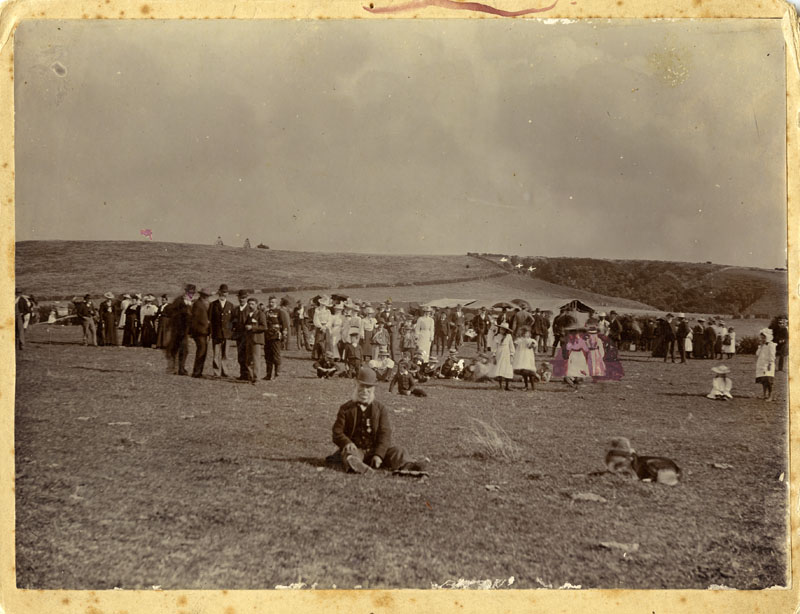
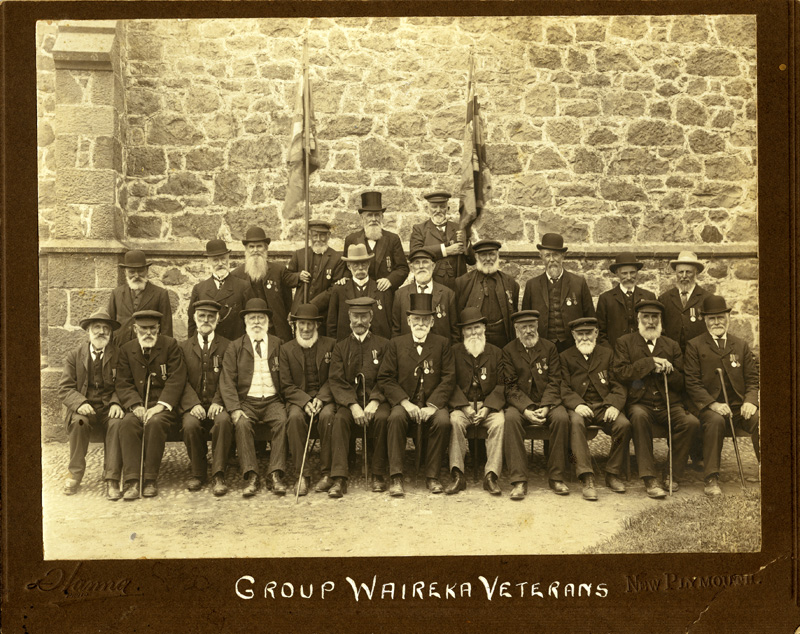
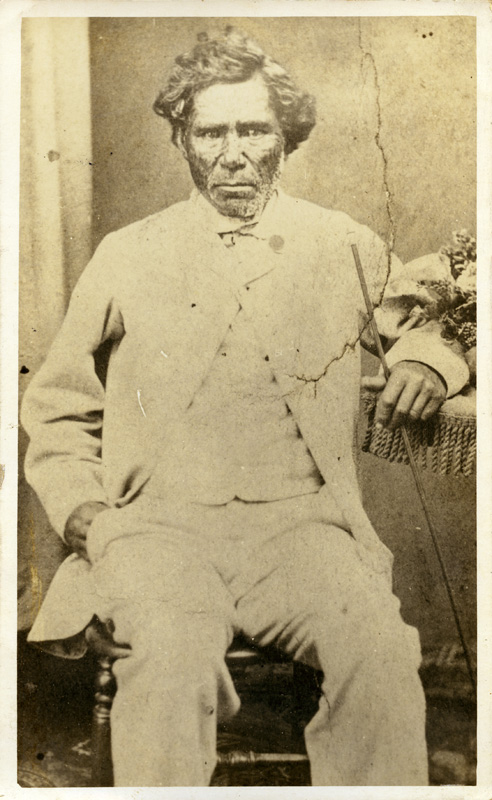
Holed up in a farm house, fast running out of ammunition, the enemy closing in... It’s a scene straight out of a Hollywood movie. But to the volunteer militia stuck in the farmhouse, finding themselves in the middle of the Battle of Waireka must have been a nightmare. Luckily a hero did come along - but whether he saved the day is open to debate.
In the movies you'll find the good guys and the baddies - and it's easy to tell who's who. But the Battle of Waireka tale is a little confused - just who were the enemy?
Te Ātiawa had been driven off their land after the Waikato invasion in 1831. Now they had returned – much to the angst of the local settlers who wanted the fertile land for farms.
Governor Gore Browne pushed ahead the purchase of the Waitara block, despite the objection of Te Ātiawa chief Wiremu Kīngi and the majority of the iwi. In February 1860 the governor ordered surveyors to peg out the block. Wiremu Kīngi resisted – his iwi pulling out the survey pegs as fast as they were placed.
Governor Browne declared martial law – gathering a bevy of men from the 65th Regiment, Marines and Blue Jackets and calling in local men of military age between 15 and 55 years. These formed a new regiment known as the Taranaki Rifle Volunteers and Militia. Te Ātiawa, concerned that they would be outnumbered by the Europeans, called in support from south Taranaki.
Waitara Camp was set up by the military and Te Ātiawa was driven off the fertile plains. They withdrew to the edge of the disputed area and built a fighting pā, Te Kohia, just inside the boundary – a challenge to the Europeans.
On 17 March 1860 the opening shots of the Taranaki War were fired at Te Kohia. The next day the pā was stormed, but found empty. New Plymouth became a settlement besieged. Both Māori and Pākehā farms along the coast were ravaged and burned.
Taranaki, Ngāti Ruanui and Ngā Rauru tribes moved toward New Plymouth in support of Te Ātiawa. They gathered at Ōmata, ten kilometres south of New Plymouth and built a pā – Kaipopo. It was built of fence posts, railings and saplings, surrounded by rifle pits. It stood on Ratanui, overlooking the two arms of the Waireka Stream on the plain below, the road and the Ōmata Stockade, and on to Paritūtū and New Plymouth.
Ōmata settlers abandoned their farms and rushed for the safety of New Plymouth or the Ōmata Stockade. But not everyone left. The congregating chiefs had declared Reverend's Brown and Gilbert tapu, protecting them. Surrounding settler families, who were French and Portuguese, were also safe – the war “was only with the British”.
The settlers were given white scarves to wear and paraded in front of lines of warriors – it was made clear there was to be no mistaken killings of the protected families. A pānui, written in Māori and declaring their neutral status, was pinned to Reverend Brown's gate. The settlers were told to stay in Reverend's house – and not to leave.
On 27 March, five settlers, including two boys, were shot and brutally slain near Ōmata. When the bodies were discovered the next day New Plymouth erupted in panic. The settlement was in danger! The big guns on Marsland Hill were fired, and, like a mother hen gathering her chicks, everyone within a three kilometre radius rushed for the safety of the town.
Reverend Gilbert describes the scene in his diary: "In the town everyone was in a state of nervous tension. Women crying and ringing their hands, children screaming and clinging in fear to their mothers, men running to and fro, the militia and volunteers already in ranks ready to leave. People outside their homes pale, breathless and trembling with anxiety."
An expedition was mounted to rescue the Ōmata settlers who had stayed on their farms. It was the first time the Taranaki Rifle Volunteers had been into battle. Not everyone was happy about it, as one mother recalled: "Oh! What were my feelings none can tell when I saw my son prepare to go forth to the battle! I felt that my heart should break should he be killed! No entreaty would stop him as he acted from a sense of duty."
From the settlement that afternoon marched two groups. The first was made up of the Taranaki Rifle Volunteers and Militia, under the command of Captain Charles Brown. Their directions were to march along the beach under the shadow of the cliffs until they reached Waireka. Then, using their knowledge of the local area, they would slip in behind the Māori position and gather up the stranded settlers, head to the main road and take them back to New Plymouth.
Lieutenant Colonel Murray and a group of regulars, were to set out along the main road to Ōmata and ferret out any Māori that might be blocking the route, and link up with the volunteers. Murray had strict orders from his commanding officer to have his force back by dark – they were needed to protect the settlement. It all sounded easy enough - but reality soon struck.
The volunteers made it to the Waireka-nui stream unseen. But while advancing inland past Jury's farm they were spotted by Māori on the hill at Kaipopo pā. They swarmed down on the volunteers, leaving only the elderly in the pā – who sat outside the palisades and watched the ensuing action.
The volunteers, untested in battle, were outnumbered and beat a hasty retreat through the fern and flax clad farmland to Jury's farmhouse. The house was fortified with whatever they could find – fence posts, railings, firewood, even sheaves of wheat – whatever was at hand. The rescuers had a battle on their hands.
That afternoon the fields and valleys around Waireka echoed to the sound of rifle and musket fire. But the volunteers had only been given 30 rounds each, and ammunition was soon running low. The tide was coming in so they could not retreat back along the beach - the would-be rescuers were trapped.
Captain Brown sent a messenger back to New Plymouth asking for ammunition. One brave settler set out across country with a cart load of bullets, but could not reach the Jury's farm. It was later discovered that the ammunition was the wrong type.
Meanwhile Murray and his Regulars had advanced at a leisurely pace from New Plymouth along the Main South Road, past the Ōmata stockade and down what is now Beach Road. There was no Māori opposition. The troops halted above the Waireka-iti Stream and sent a barrage of rockets toward the distant Kaipopo pā. Murray sent troops out to investigate, but did not engage in any of the action.
As Chris Pugsley writes in Walking the Taranaki Wars "Murray clearly had no thoughts on fighting a major battle at Waireka. He wanted to keep the route open and get back to New Plymouth as quickly as possible."
The sounds of rifle fire caused him to send support to the settlers – but it was late afternoon and he was conscious of the need to be back in New Plymouth before dark. He ordered the recall – and the sound of the horn cut across the plains. His troops reluctantly withdrew, leaving the settlers to their fate.
Every movie needs a hero, preferably good looking and a real charmer with the ladies. Back in New Plymouth Captain Cracroft from the Niger received word of the action. With 60 sailors and a volunteer as guide, he set out along the Main South Road, passing Murray's retiring troops on the way, and reached the road leading up to Kaipopo pā.
It was just on dusk, confused rifle fire was still echoing around the plains as the settlers and Māori took pot–shots at each other from under cover. On the skyline flags could be seen flying within the pā. Cracroft pointed to the material flapping defiantly in the sea breeze and said: "Ten pounds to the man who gets that flag!"
If this was a movie - the director would be yelling “Cut!” about now. The actors would be standing around in a confused muddle - there's more than one version of what happened next.
Captain Cracroft's version is more akin to the Hollywood movie style - according to him "…it was now half–past five, and as there was only half–an–hour's daylight left, I determined to attack this pa at once. I accordingly planted the 24–pounder rocket tube about 700 yards from it, and after a few discharges the men stormed this pa under heavy fire in the most gallant style. William Odgers, leading seaman, doing his duty as my coxswain, being the first man in it; and having captured the flags and destroyed everything living in the trenches, as far as could be ascertained in the dark, I returned to the blockhouse."
Other reports are not nearly as dramatic - they say the pā was deserted, save for one elderly Māori who was cut down. William Odgers tore down the flags, earned his £10, and later a Victoria Cross, for storming an empty pā. Odgers was the first in New Zealand to be awarded the VC.
Whether Cracroft fabricated the events is unknown. But he then about-turned and headed back to the blockhouse, abandoning the settlers and the men at Jury's farmhouse. Down around the farmhouse the Māori heard the firing behind them and withdrew up the slopes. Captain Brown's men now had the battlefield to themselves. They dusted themselves off, gathered up their wounded, and headed back to town across country.
In New Plymouth the townsfolk were anxiously waiting for news of the volunteer company. Imagine their dismay when Murray's troops returned alone, the nerve-wracking wait and then the joy of seeing their loved ones safe. One mother's account sums it up: " … hours passed as if in a daze, I thought my heart would break, until all at once a tumultuous cry of joy thrilled through my veins, and the words 'the volunteers are safe' quickened me into life again."
European casualties numbered around 14 killed and wounded, Māori maybe 17.
Wellington Carrington – married to a Māori woman – watched the action and later wrote. "The battle was fought by the Nga Mahanga, headed by Kingi, Paretane and Perere, the best fighting men of the tribe. The first was wounded, the two latter were killed. On Jury's farm the battle was fought by the Ngati ruanuis, headed by Te Hanatau, the head chief of the tribe, who was killed. Old Paul (Paora Kukutai) was killed when the pa was stormed and the colours taken."
British newspapers trumpeted the victory, the gallant actions of the military and volunteers, claiming as many as 150 Māori were killed, with “cartloads of bodies” driven away from the battle site. This was a gross exaggeration, but no one knows exactly how heavy the loss of Māori life was.
The Māori themselves cried victory - hadn't they proved themselves in their first major battle against the enemy? But the loss of so many chiefs took a heavy toll and led to the withdrawal of the tribes the day after the battle.
In all of this the settlers, who everyone had set out to save, seem to have been forgotten. During the battle they had been under protection in Reverend Brown's house, watching part of the action out a window. The little group made their own way to New Plymouth the next day. Reverend Gilbert claiming: "It was no wish of ours that an armed expedition should be set on foot on our behalf. We were perfectly safe."
Whether or not the settlers needed assistance, and whether New Plymouth was actually in danger or not, Captain Cracroft and his men were seen as heroes. Their actions had saved the volunteers and allowed the settlers to return to New Plymouth unharmed. The ladies of New Plymouth presented colours to the Taranaki Volunteer Rifles and Militia, and Captain Cracroft and his men. Each bore the single battle honour “Waireka”.
Then the story gets confusing again. Both sides claimed victory – so who won?
The book Frontier: the battle for the North island of New Zealand sums it up like this
"Whose reputations were made and whose lost? And, for the sake of the record, who won? There were no real victors, Seven hundred men of two races, spent an afternoon shooting inconclusively at each other across the ferny ridges above the sea. The fight ebbed and flowed, terrain was gained, held briefly and then abandoned. A handful of men were killed on each side and a score wounded. Nobody won but each side retired to claim a victory of sorts."
But the battle of Waireka does play an important part in Taranaki's history. It was the first time a British volunteer company engaged an enemy on the battlefield. It was also the day the first Victoria Cross in New Zealand was won and the first confirmation that the Māori could fight well, and would fight for their land.
Belich, J. (1986). The New Zealand Wars. Auckland: University Printing Services.
Cowan, J. (1983). The New Zealand Wars. Wellington: Government Printer.
Gilbert, T. (1999). New Zealand Settlers and Soldiers. Christchurch: Kiwi Publishers.
Maxwell, P. (2000). Frontier: the battle for the North Island of New Zealand 1860-1872. Auckland: Celebrity Books for Waitekauri Publishing.
Moorhead, M. (1990). Tales of old New Plymouth. New Plymouth: Taranaki Branch of the New Zealand Founders Society.
Pugsley, C. (1995). Walking the Taranaki Wars. Wellington: New Zealand Defence Quarterly, The Ministry of Defence.
Wells, B (1998). The history of Taranaki a standard work on the history of the province. Christchurch: Kiwi Publishers.
Please do not reproduce these images without permission from Puke Ariki.
Contact us for more information or you can order images online here.